This podcast engineering analysis considers clipping, levelling, plosives, reverberation control, and EQ assist. For each subject, audio A/B samples are provided with a few explanatory notes. After these samples, there is a more detailed global analysis of the original and corrected tracks, including 5 minute audio samples from each.
As always, while engineering it’s best to listen to audio on monitor (flat response) speakers or headphones.
Conclusion: The correctives demonstrated here are only as effective as the post production tools and techniques we can apply to the original audio file. As a general rule, most audio issues can and should be managed at the source during field tracking, with special consideration to proper mic placement and handling, monitoring of recording levels, using location processing such as compressors and limiters, and mitigating environmental sound issues as much as possible. Thereafter post production engineering techniques such as the ones applied here are only remedial. Remember, the more you have to process anything, the less it sounds like the original. We should always try to maintain high fidelity.
Special thanks to John Chamberlin of the Jagoff! Podcast for permission to analyze this episode. These real world examples are great educational tools. Be sure to check out John’s podcast and subscribe, follow, rate, review, share it.
CLIPPING CONTROL
CLIPPING – ORIGINAL
- clipped samples = 1,296
- clipped samples in original track = 29,630 (excessive and severe)
- severe and excessive clipping past 0dB causing periodic distortion and degradation of signal clarity/intelligibility
ORIGINAL WAVEFORM: SEVERE CLIPPING
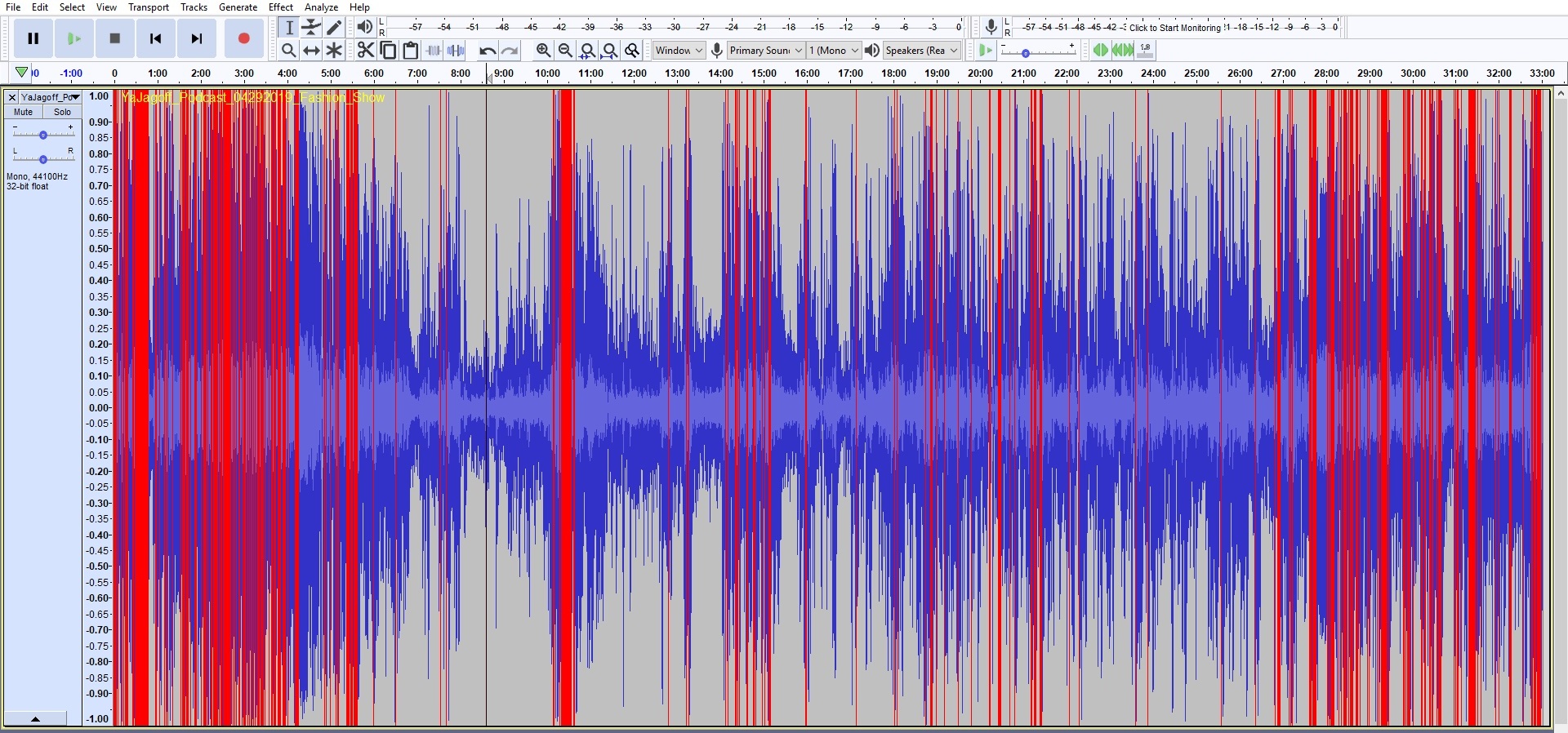
CLIPPING – CORRECTED
- correction through levelling
- clipped samples = 0 (optimal)
- clipping distortion mostly managed but aurally evident
CORRECTED WAVEFORM: NO CLIPPING
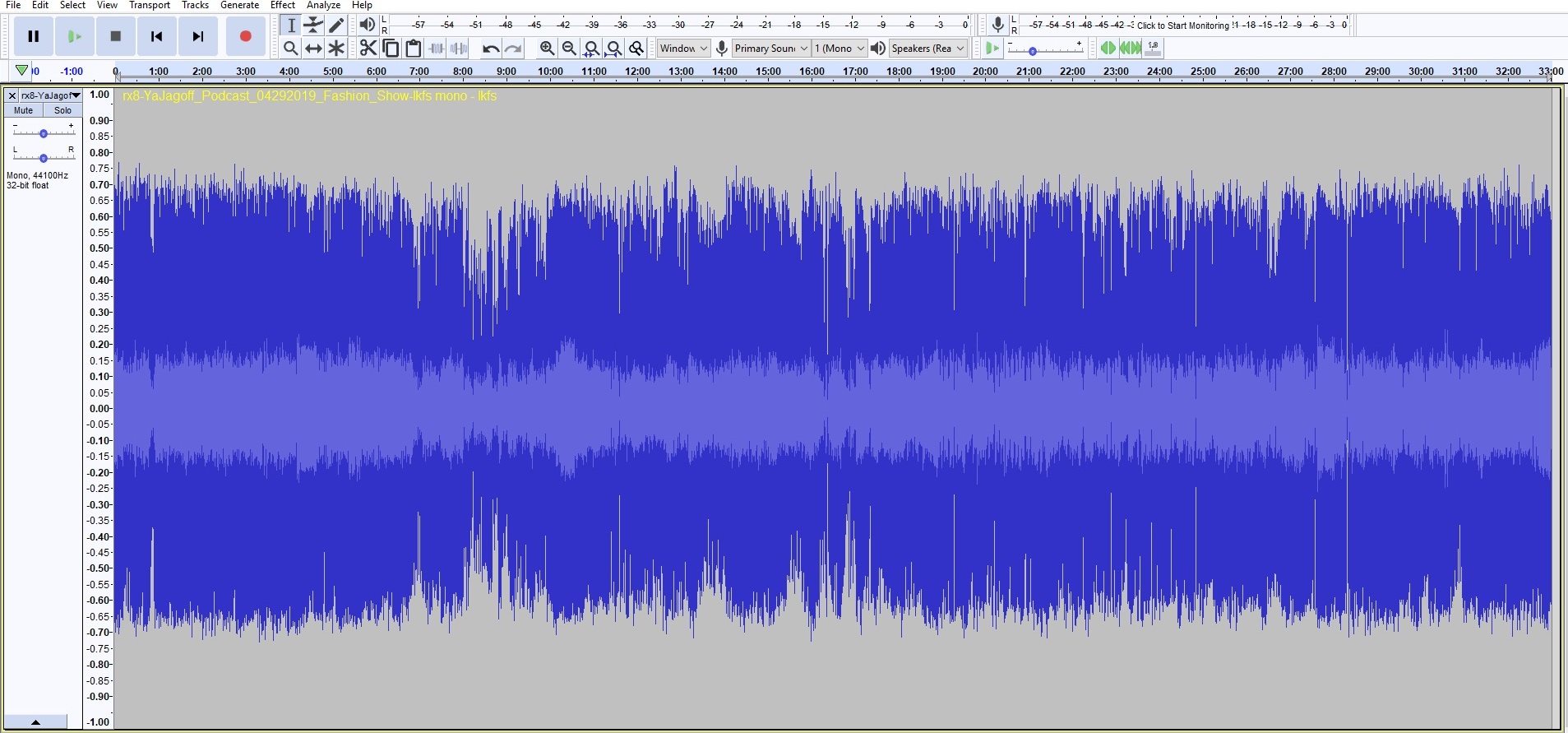

LEVEL CONTROL
LEVELLING – ORIGINAL
- loudness range (LRA) = 14.4 LU
- wide dynamic range = see original waveform
LEVELLING – CORRECTED
- downward expander = -65dB noise floor, -20dB threshold, 3.5:1 ratio
- loudness range (LRA) = 6.6 LU
- narrow dynamic range = see corrected waveform
 PLOSIVE CONTROL
PLOSIVE CONTROL
PLOSIVES – ORIGINAL
- periodically evident and moderately severe
PLOSIVES – CORRECTED
- reduction <200Hz
 REVERB CONTROL
REVERB CONTROL
DE-REVERB – ORIGINAL
- live event with natural reverberation from environment
DE-REVERB – CORRECTED
- ~10dB reduction in reflections
- artifact smoothing
- minimal reverb correction possible without affecting natural environmental ambiance
EQ ASSIST
ORIGINAL FREQUENCY SPECTRUM
EQ = appears to be some application of contouring the curve (e.g., native mic freq. response or post production processing)
- low end
- @140Hz = -38.4dB
- @60Hz = -51dB (critical roll off point)
- @20Hz = -58.9dB (relative minimal removal of low end energy)
- high end
- 14kHz = -88.7dB
- 16kHz = -116.4dB (critical roll off point)
- 20kHz = -122dB (relative minimal removal of high end energy)
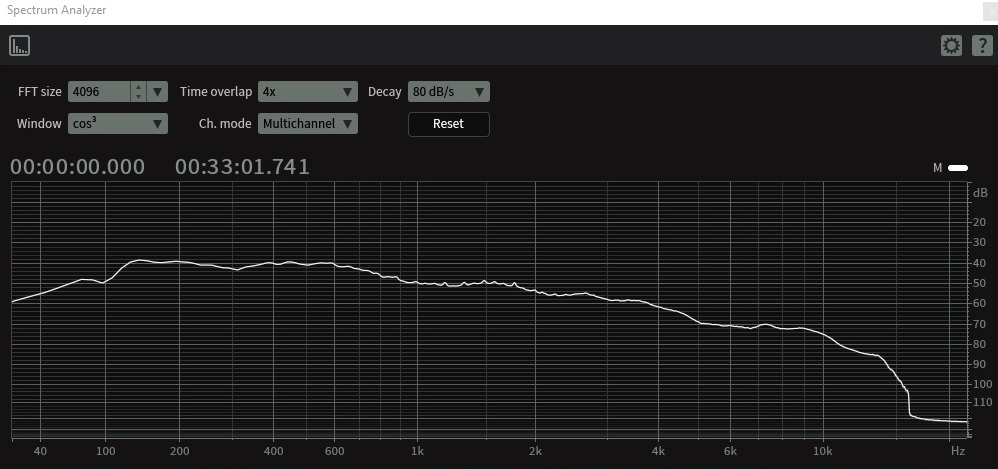
CORRECTED FREQUENCY SPECTRUM
EQ = applied rolloffs on both ends of the spectrum to reduce unnecessary frequency energy
- low end
- @140Hz = -31.2dB
- @60Hz = -57.8dB (critical roll off point)
- @20Hz = -96.1dB (relative significant removal of low end energy)
- high end
- @14kHz = -97dB
- @16kHz = -119dB (critical roll off point)
- @20kHz = -164dB (relative significant removal of high end energy)
Note the steep roll off on the lower end and the hard cut off on the upper end eliminating a lot of unnecessary sonic energy.
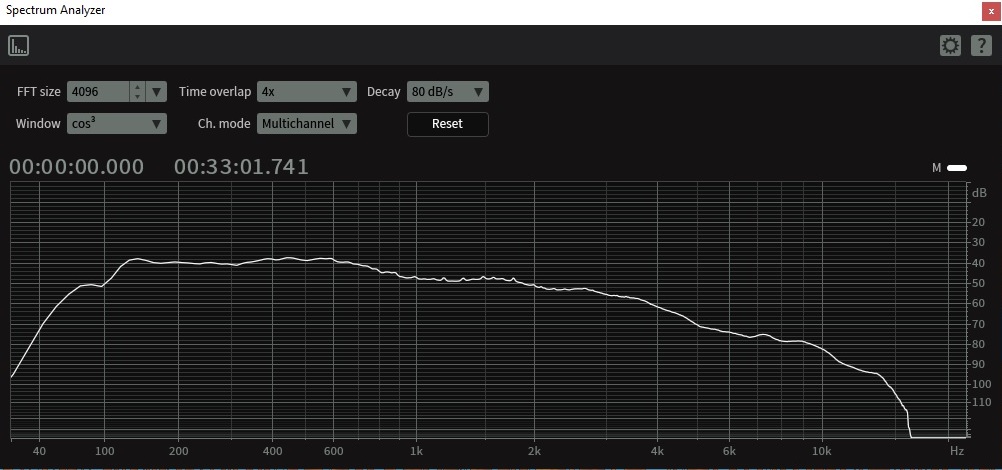
GLOBAL TRACK ANALYSIS
ORIGINAL TRACK
Note the clipping and very wide dynamics.
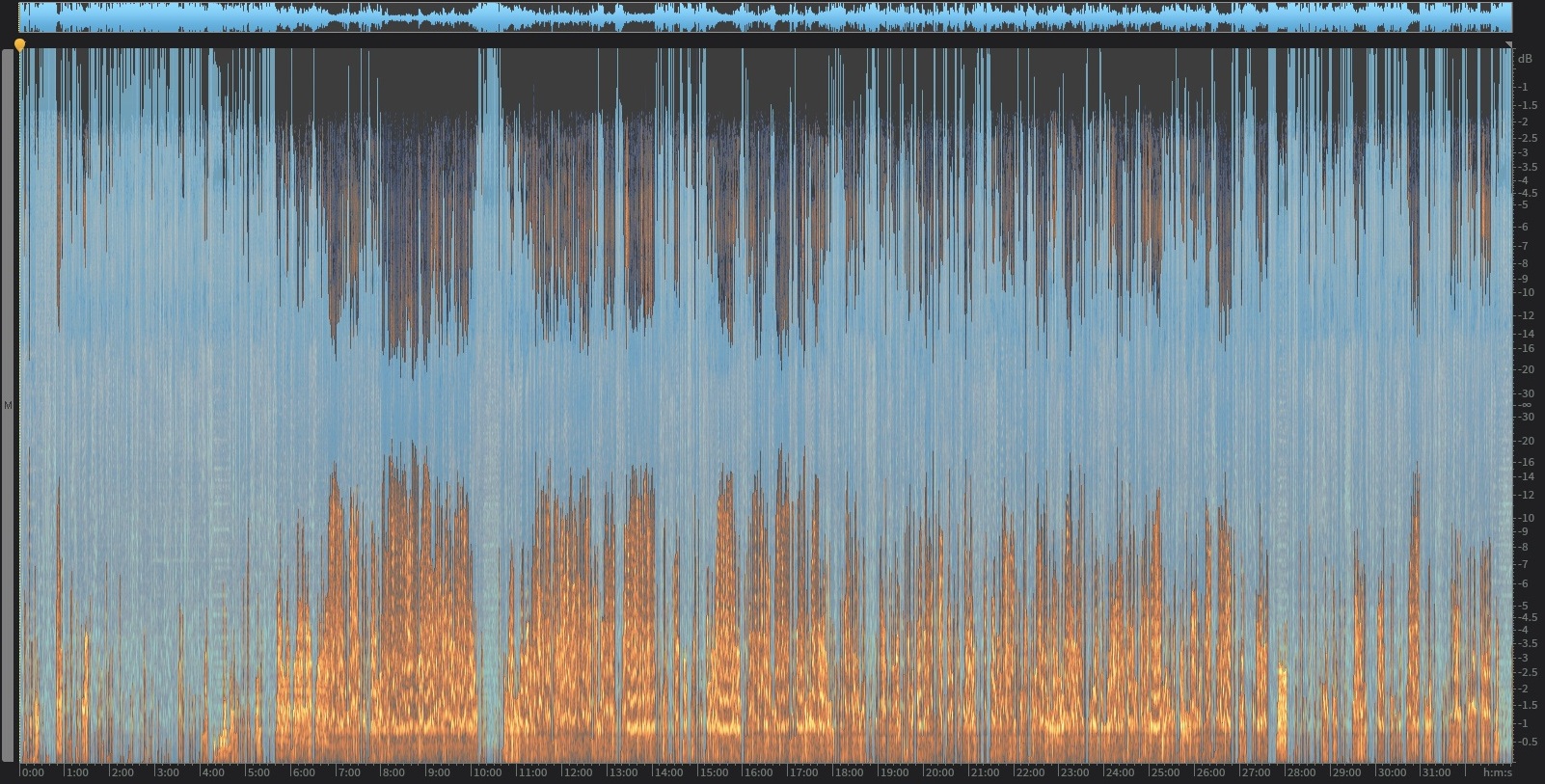
- single track mono
- duration = 00:33:01
- file size = 15.3MB
- 44.1K sampling
- original recording file type & bit rate = unknown
- rendering = compressed mp3/64kbps (low resolution)
- true peak = +1.05dB (exceeds clipping threshhold)
- total RMS level = -14.06dB
- loudness range (LRA) =14.3 LU (wide dynamic range)
- loudness normalization (entire track) = -16.2dB (nonconforming to BS.1770 Integrated Loudness accepted specification for mono podcasting)
5 MINUTE SAMPLE
CORRECTED TRACK
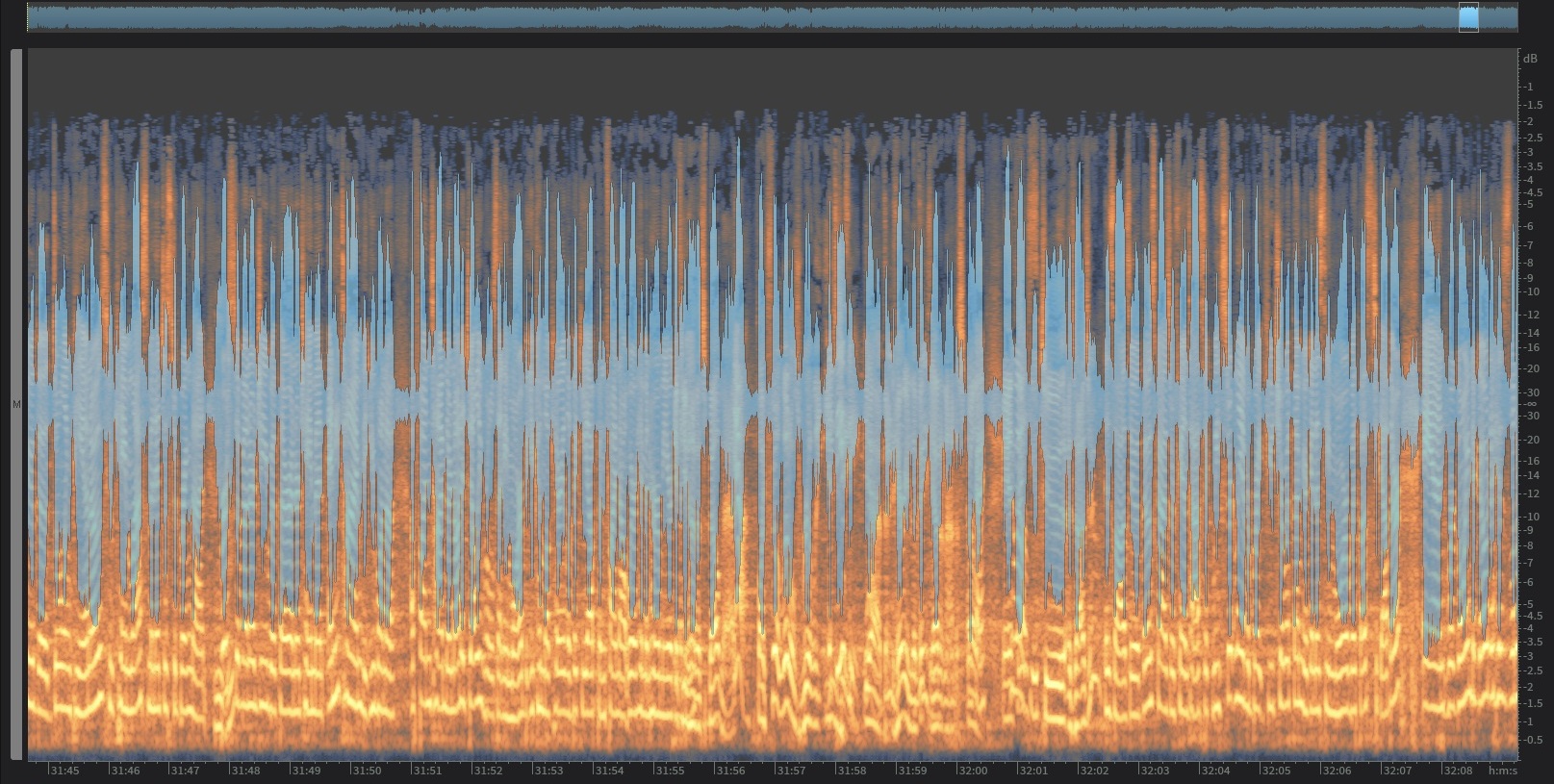
- single track mono
- duration = 00:33:01
- file size = 330MB
- 44.1K sampling
- original recording file type & bit rate = unknown
- rendering = mp3 / 1411kbps (high resolution)
- true peak = -2.22dB (below clipping threshhold)
- total RMS level = -13.75dB
- loudness range (LRA) = 4.8 LU (narrow dynamic range)
- loundess normalization (entire track) = -19dB LKFS (conforming to BS.1770 Integrated Loudness accepted specification for mono podcasting)
5 MINUTE SAMPLE
You must be logged in to post a comment.